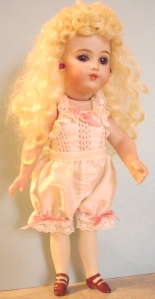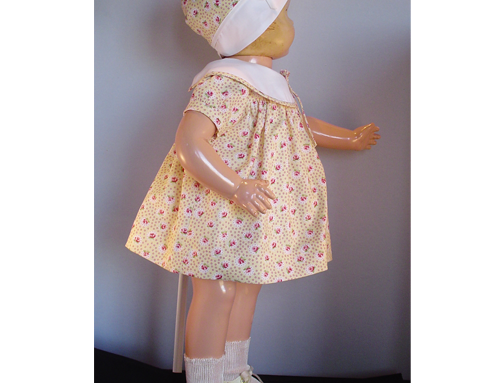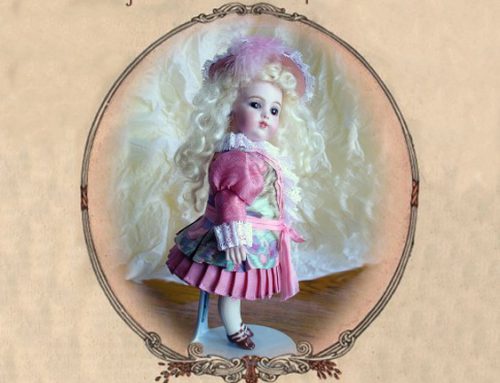Authentic Costuming For Dolls
Authentic Costuming for Dolls – Today there are many wonderful sewing machines, beautiful fabrics and trims, and doll patterns available for the doll costumer. If you are sewing for a modern doll, your choices are limited only by your imagination.
If you are sewing for an antique doll or an authentic reproduction doll, then your choices should be limited to materials and styles that reflect dolls from that time period. The more you study authentic period work, the more discerning you will become in your choices for authentic reproduction costuming. As you research and become more knowledgeable about a particular doll or time period, it is fun and challenging to search for just the right materials to give your doll the right look and feel. Whether you use new or recycle old fabrics, if you choose mostly natural fibers, then your fabrics and trims will age gracefully, the same as those on the antique dolls.
Beautiful hand sewing for antique dolls depends upon small even stitches and natural fibers. Before 1860 most garments were hand sewn, but with the invention and availability of the sewing machine, more garments became machine sewn with various combinations of handwork. Doll clothes however were mostly hand sewn because of the scale. Seams on today’s commercial garments are surged, and home sewers sometimes zigzag the edges of the seams. Antique clothing was carefully made with every single seam finished in some way. Common ways to finish seams were to use a French seam, flat felled seam, or various stitches that overcast the edge of the seam and secured it to a lining.
Although there are many choices in modern fabrics, few of them have the feel and draping qualities of natural fibers such as silk, cotton, linen, and wool. Whether you are sewing for an antique doll or a quality antique reproduction, you will want to choose natural fibers for authentic reproduction clothing. Occasionally you may need to compromise with trims. Many of the cotton laces are created on a bed of nylon net which is pulled away after the lace is created, making the cotton lace a small percent nylon. Rayon fabric was invented in 1855 but did not come into commercial production until 1891. Although rayon is synthetic, it is produced from wood, so it has natural cellulose fibers that drape and age in a similar fashion to the natural fibers.








THANK YOU for sharing your truly wonderful work and memories.The tiny clothing pieces are marvelous and sooooo inspiring.
Happy Holidays to you and your little friends 🙂
Brigitte in Maine/USA
Everyone loves it when individuals come together and share views.
Great website, stick with it!